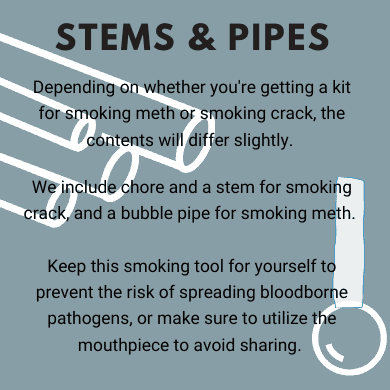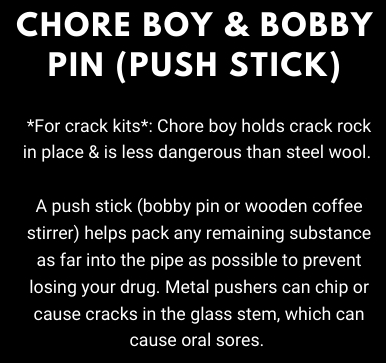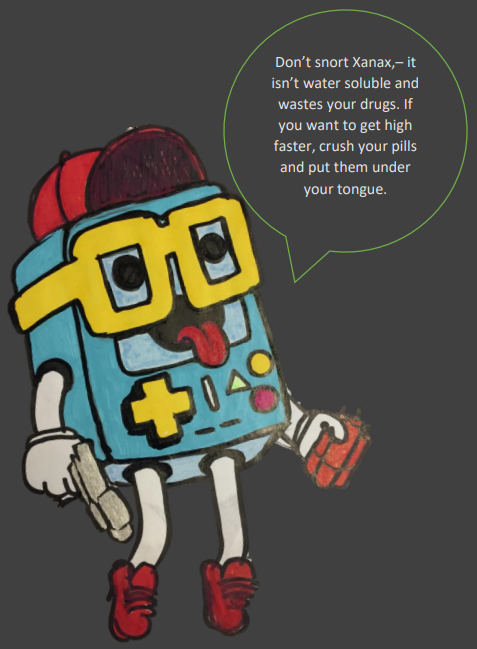A Denver nonprofit hands out drug paraphernalia to local addicts in the name of “harm reduction.”
Your tax dollars are paying for it.
‘Use Your Dope First’
The Harm Reduction Action Center (HRAC) in Denver purports to “educate, empower and advocate for the health and dignity of Denver’s people who inject drugs, in accordance with harm reduction principles.”
“Harm reduction” refers to policies and aid focused on reducing the consequences of illegal drug use, like accidental overdoses and the spread of disease through dirty needles.
Some harm reduction policies, like training police officers to administer the overdose reversal drug, Naloxone, can be helpful — but only in the context of preventing and discouraging drug use.
The materials distributed by HRAC do the opposite: They promote drug use by distributing paraphernalia and step-by-step instructions on getting the best high.
Case-in-point: HRAC helps users package and ingest drugs with its “parachuting” kits.
“Parachuting” refers to swallowing crushed drugs wrapped in a permeable barrier like toilet paper. HRAC’s “parachuting” kit includes several empty pill capsules recipients can use instead.
Pictures posted by @dobetterdenver on X show the kit also contains:
- Utensils for gathering and packing drugs into the capsules.
- Alka-Seltzer tabs to “add to the capsule to help with stomach irritation.”
- An instruction card that doubles as a funnel.
HRAC also hands out “safe smoking” supplies with different paraphernalia based on whether the recipient smokes crack or meth. The kit for crack users doesn’t contain any metal utensils — for safety’s sake.


HRAC’s online resources are similarly egregious. The organization’s booklet on benzodiazepines begins with a cartoon video game instructing readers via a lime green speech bubble:
Don’t snort Xanax — it isn’t water soluble and wastes your drugs. If you want to get a high faster, crush your pills and put them under your tongue.

Subsequent pages offer tips like:
- “If you’re intentionally using both opiates and benzos: USE YOUR DOPE FIRST. You can always add more benzos.”
- “Always test a little chunk of a pill [for fentanyl] before ingesting. You can drink the solution you tested and lose none of the original pill.”
The Problem With Harm Reduction
HRAC’s materials are characteristic among harm reduction organizations because the harm reduction ethos, at its core, attributes the harms of drug use to social stigmatization, rather than drugs themselves.
The goal of harm reduction purists, then, is not to center sobriety or prevention, but to effectively make hard-core drugs “safe” and functionally legal.
The United States Substance Abuse and Mental Health Services Administration’s 2023 harm reduction framework reads, in part:
Harm reduction seeks to reduce the harmful impacts of stigma, mistreatment, discrimination and harsh punishment of [people who use drugs], especially those who are black, indigenous and other people of color.
Elsewhere, the report is more explicit:
Harm reduction is inclusive of abstinence as a chosen pathway but not … as a coerced pathway.
SAMSHA’s framework assumes drug use only affects the user. But hard-core drugs are illegal precisely because they devastate whole communities.
Major cities like Portland, San Francisco and Philadelphia discovered this the hard way after decriminalizing hardcore drugs.
Last year, British Columbia passed a law relegating drug use to private spaces after “several high-profile instances of problematic drug use at public locations, including parks, beaches and around public transit.” according to Deputy Chief Constable Fiona Wilson.
Wilson told the Canadian parliament:
While working toward better outcomes for people who use drugs, there must also be consideration for the needs and wellbeing of the broader public.
Government Support
But Americans don’t get to choose whether to fund HRAC. Governments at all levels pour millions of dollars into the group’s funding vehicle every year.
HRAC and 90 other local “partner organizations” operate under the financial umbrella of the Colorado Nonprofit Development Center (CNDC). According to its 2024 audit, the organization is sitting on more than $11 million in government grant payments it hasn’t spent.
In 2023, CNDC received $5.8 million — 30% of its income — in government grants from donors including:
- U.S. Centers for Disease Control
- U.S. Health and Human Services Administration
- Colorado State
- Eagle County, CO
- Denver County, CO
- City of Denver, CO
- City of Boulder, CO
- City of Fort Collins, CO
CNDC funneled nearly $81,000 of that $5.8 million to HRAC.
The city of Denver has paid the financial group nearly $4 million since January 1, 2020, including $321,000 in 2025 to date.
Denver’s support for HRAC and company feels particularly outrageous given the city operated at a $250 million deficit last year.
Officials hope to sell citizens on even more spending in 2025 — but why should citizens greenlight such largesse? As it stands, Denver taxpayers are funding the social services that take care of people who can’t take care of themselves and the “charitable” organizations enabling drug addiction.
Why It Matters
Illegal drugs devastate communities and families. Taxpayers shouldn’t be propping up initiatives that enable and normalize illegal drug use. The government shouldn’t be supporting an ethos that focuses on anything but stopping the proliferation and consumption of illegal, life-ending substances.
Additional Articles and Resources
British Columbia Walks Back Harm Reduction Law
Philadelphia Legislators Tackle Drug Crisis, Face Opposition from Harm Reduction Groups
Bipartisan Vote Balances Compassion and Law-and-Order in San Francisco
Oregon Lawmakers Vote to Recriminalize Hard Drugs
Citizens Turn Against Lax Drug Laws as Consequences of Drug Addiction Overwhelm Communities
Governments Can’t Cure Homelessness — Christians are the Solution
Governments Can’t Cure Homelessness—Christians are the Solution (Part 2)
Harm Reduction Makes Incursion into Massachusetts Hospitals
Massachusetts Hospital Network Loosens Reporting Requirements for Prenatal Drug Abuse










